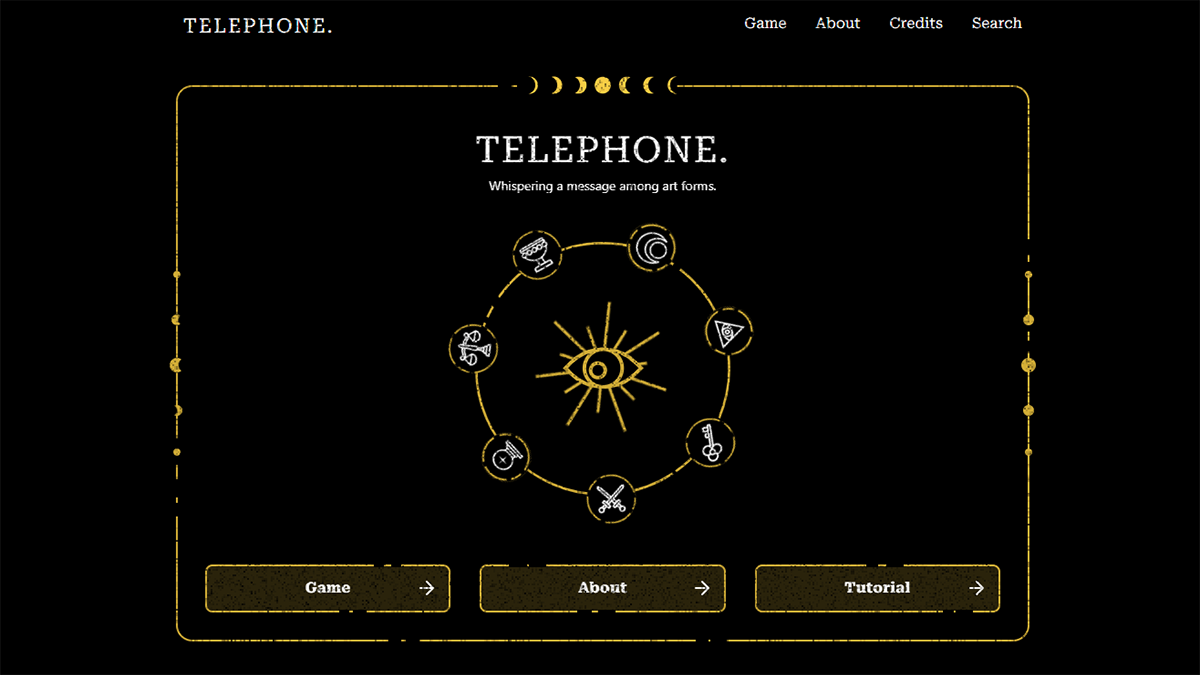Leeds Trinity University academics and students are among artists from 65 countries contributing to the global art project TELEPHONE – a digital, creative reimagining of the children’s game of whispers.

Now at its third and most complex iteration, TELEPHONE is believed to be the largest collaborative contemporary ekphrastic work of art in history – where a message is passed on via all possible forms of art, including poetry, painting, music and film.
The first edition of TELEPHONE was in 2015 and involved 315 artists, while the 2025 edition sees 1395 artists from 930 cities in 65 countries sharing their interpretations, creating an interconnecting work of art around the world where one piece links onto several more.
Included in this global art community are Leeds Trinity University academics, Oz Hardwick, Professor of Creative Writing and Dr Amina Alyal, Senior Lecturer in English and Creative Writing, and postgraduate students, William Coniston and Gill Connors.
Professor Hardwick, whose work has been widely published in international journals and anthologies, and who has been described as a "major proponent of the neo-surreal prose poem in Britain", contributed a poem in response to a painting by Seattle artist Lisa Sheets.
"When I received a pastel-coloured image which depicted a Victorian woman paddling a canoe, against a backdrop which suggested post-Expressionist Sci-Fi graphics, I had a lot to work with," Professor Hardwick explained. "I took my title, A Boat on a River from the opening line of The Beatles’ Lucy in the Sky with Diamonds, which inspired me to produce my own collage of words and impressions which invite the reader to make connections and meanings for themselves."
Dr Alyal responded to a sculpture by Seattle artist John Schmitz, with a prose poem that reflected “a metaphor for life, making marks on the world that are then lost”.
“It’s enriching to be part of this exhibition,” Dr Alyal said. “Looking at the pieces that came before and after me was fascinating – the way the piece I interpreted evolved from fire to water, and how it went on to suggest the cosmos to others.”
In addition to the two Leeds Trinity academics, the artistic project also includes MA Creative Writing student William Coniston and PhD student Gill Connors.
William’s poem, Inheritance, was written in response to a watercolour drawing by Californian artist Emily Hostutler. The warm tones of the drawing inspired William to explore themes of environmental damage in his artwork. “This led me to write a free verse poem in two timelines: 1965, when a young woman is on a carefree sunny beach holiday, and 2035, a possible scorching future when the Earth is dying,” William explained. “I connected them by making a young woman in 2035 visit the same place, where her grandmother - the woman in 1965 - and her grandfather met.”
Commenting on the interconnected nature of TELEPHONE, William added: “I was fascinated to see that my poem is sixth in a chain which included film, ice sculpture, music and poetry but began with a film of fire burning, a theme which was central to my poem.”
Gill responded to a musical piece by Missouri artist Sebastian Bach, which encouraged her to push the boundaries of her writing. “I listened to it first in a busy London station and never imagined where it might take me,” she said. “I ended up writing something that was a long way from what I might usually write. I imagined the person who had made the piece I followed. I loved the process, and I feel it made me write out of my comfort zone.”
Nathan Langston, the creator of TELEPHONE, described the project as “a powerful counterpoint to today's anti-globalist tendencies. TELEPHONE creates tangible human connections between artists who might never otherwise meet, transcending national and cultural boundaries,” Nathan added. “It is certain that you will only experience 2-3% of the art in this exhibition upon your first viewing. Don’t stress about it. It’s just a game and games are for fun. There is a vast number of possible pathways throughout this game. We leave it to your own judgement, but it is possible that TELEPHONE is one work of art, created by artists from 65 countries.”
You can find out more about TELEPHONE and the pieces of art that form it on the official website.